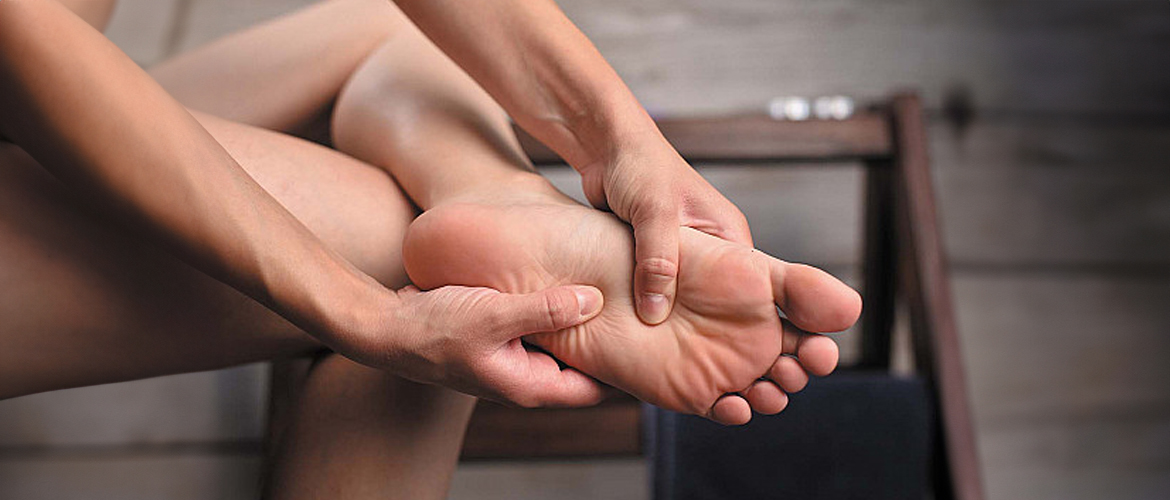Swollen feet can be a problem for many of us. Am I right? Sometimes, they can be painful, too. And do you know what? You can avoid swollen feet by using some simple home care tips. Without any further delay, let us dive into the blog to learn more about the tips to avoid swollen feet and ankles, and also the ways to cure it.
What is Feet Swelling?
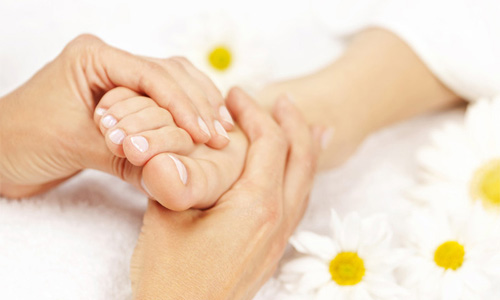
Swelling in the feet can be due to various reasons. Some of the common ones are increased weight during pregnancy, or traveling by road or air. Swelling can cause a lot of discomfort in the ankles and create some problems like ill-fitting shoes, and socks leaving marks around the ankles, and sometimes, pain in the feet. This swelling is called edema, which can be uncomfortable and cause irregular blood supply in the legs. This swelling can be an alarming symptom of a particular disease and should not be neglected. Have a word with your doctor regarding the swelling and understand the causes.
What Causes Swollen Feet?
Some of the common causes of swollen feet are given below:
1. Prolonged Standing or Sitting

Staying in one posture for a long period can lead to fluid accumulation in the lower extremities due to reduced circulation, resulting in swollen feet and ankles.
2. Pregnancy

Hormonal fluctuation and increased pressure in the veins during pregnancy can lead to fluid retention and swelling on your feet.
3. Injury
Some sprains or fractures on the foot can lead to swelling. The inflammation occurs as it is the body’s natural way of responding to the healing process.
4. Medication Side Effects
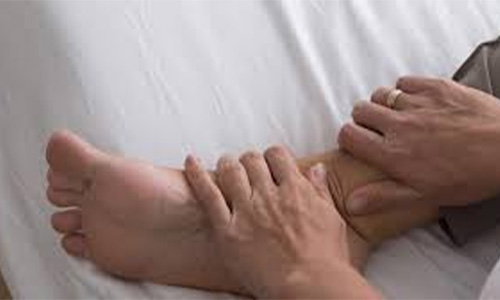
Certain medications containing calcium and anti-inflammatory drugs can cause fluid accumulation and swelling in the feet as a side effect.
5. Inflammation
Inflammatory conditions, such as arthritis and cellulitis, can cause swelling in the feet as well as in the ankles.
How to Get Rid of Swollen Feet/Ankles Fast
Some home care tips and simple remedies, such as the following, can help reduce the swelling in your feet or ankles.
1. Water Therapy for Swollen Feet
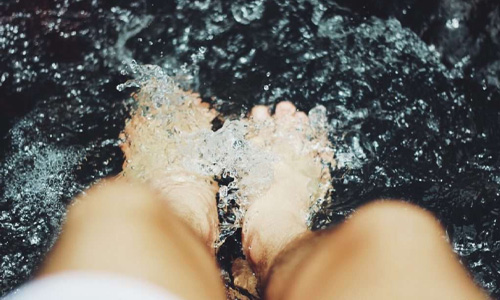
Water splashed on the feet and ankles can be very useful. Swimming or sitting in bathtubs can help with the reduction of swelling. Water can also help your circulatory system and it can be practiced regularly. Soaking your feet in a hot water tub, with some Epsom salt in it, is the best way to treat the swelling. Adding salt to water can also relax your feet.
2. Exercise/Yoga for Relief
Starting some exercise, especially yoga has proved to be very useful in swelling-related issues. It can increase flexibility and help improve a person’s circulatory system. If you have practiced yoga earlier, then you can try again at home. Beginners are advised to take a class first as they have to learn the right way to do it. Yoga has some breathing techniques and they have to be done correctly. The poses and postures, if done correctly, can show great results.
3. Effective Massage Techniques

A massage therapy session can be a great cure for swollen feet and ankles. Discuss with your therapist the problem areas and why you want to get the massage. The therapist can concentrate on the areas that need attention. In the case of pregnant women, we recommend a prenatal therapy expert, who can assist with techniques to combat foot swelling.
4. Place Feet at a Higher Position
Whenever you get a chance, try to put your feet at a higher level. Gravity does not go well with swelling, so use pillows, chairs, or some high areas to elevate your feet. Working people can use chairs and tables. Pillows can be used when you are at home. This elevation can make a huge difference.
5. Hydration and Nutrition:
Drink 8 to 10 glasses of water every day. High fluid intake can reduce swelling. It also detoxifies the body and throws out excess toxins and salts. Cucumber and lemon, which have anti-inflammatory properties, can also be used to reduce swelling. They can be added to food or sipped on during breaks.
6. Dietary Changes
Make changes in some food habits and reduce the salt intake in your food. Potato chips and salted peanuts can be avoided as they have extra salt sprinkled on them. These small things may help reduce the swelling.
7. Use Compression Socks
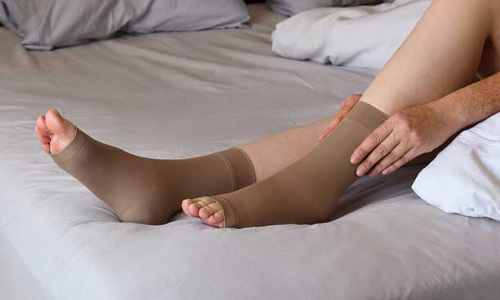
Some people may suffer from swollen feet due to venous insufficiency. In this case, doctors recommend compression socks, which improve the flow of blood from the legs to the heart.
But always remember that you shouldn’t use compression socks if you have peripheral arterial disease, as it may affect the overall blood supply in your body.
8. Drink Enough Water
It is mandatory to drink enough water every day if you are suffering from edema. Getting enough fluids can help reduce swelling. When your body is not hydrated enough, it leads to swelling, especially in the legs.
9. Magnesium-rich Foods and Supplements
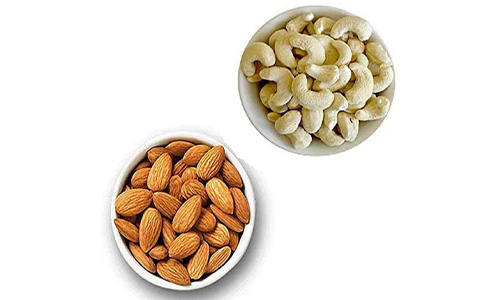
Fluid retention may be a sign of a magnesium deficiency. Taking foods that contain high magnesium levels can help you boost your magnesium levels.
Here are some of the magnesium-rich foods you can add to your dietary plan:
- Almonds
- Cashews
- Spinach
- Brown rice
Adult males need 410-420 milligrams of magnesium every day, and females need up to 310-320 milligrams. If you are not getting enough magnesium every day, you can consult your doctor and take recommended supplements.
10. Reduce Salt Intake
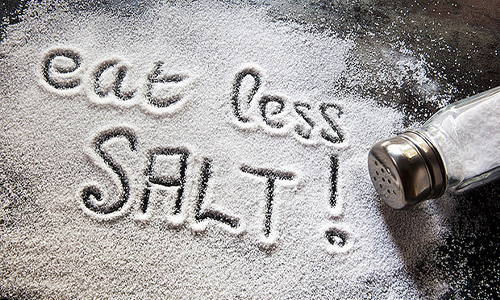
Did you know that sodium is directly linked to the fluids in your body? A study has found that males aged above 60 years are more likely to have leg swelling. Reducing sodium intake can help you decrease swelling in your body, including your feet. So better consume low-sodium level foods and try to avoid adding salt to meals as much as you can.
11. Increase Your Intake of Potassium-rich Foods

If you are not in the dietary restrictions, consider increasing your potassium intake by eating foods that contain potassium.
Some potassium-rich foods are:
- Dried apricots
- Potatoes
- Kidney beans
- Orange Juice
- Acorn squash
12. Ice Pack
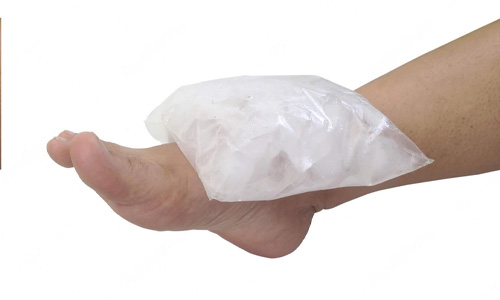
Apply an ice pack to the swollen area for up to 15-20 minutes at a time, it can help diminish the swelling and numb any pain in the swollen area.
13. Diuretics
Medicines that help the body get rid of excess fluid through urine can treat worse forms of edema. Diuretics, also known as “water pills,” are used to treat blood pressure as well as swelling in your feet and ankles.
14. Manage Your Weight
Did you know that heavy body weight can affect blood circulation, leading to swelling of the lower extremities? Losing weight can help ease the strain on your feet and quickly reduce foot swelling as well. Seek medical help if you have concerns about weight gain.
When to See a Doctor?

As stated earlier, simple home remedies and lifestyle changes can help combat edema. However, if the swelling does not go away or occurs repeatedly, it is important to make an appointment with a doctor to determine whether there is an underlying cause.
Also, if swollen feet or ankles occur alongside shortness of breath, pain, or pressure in the chest, call the emergency service immediately.
I hope this blog helps you learn about avoiding and treating swollen feet and ankles in detail. In this way, a few changes in your diet, exercise, lifestyle, and postures can help you avoid swollen feet without making a big hole in your pocket.
Home Care Tips to Avoid Swollen Feet

